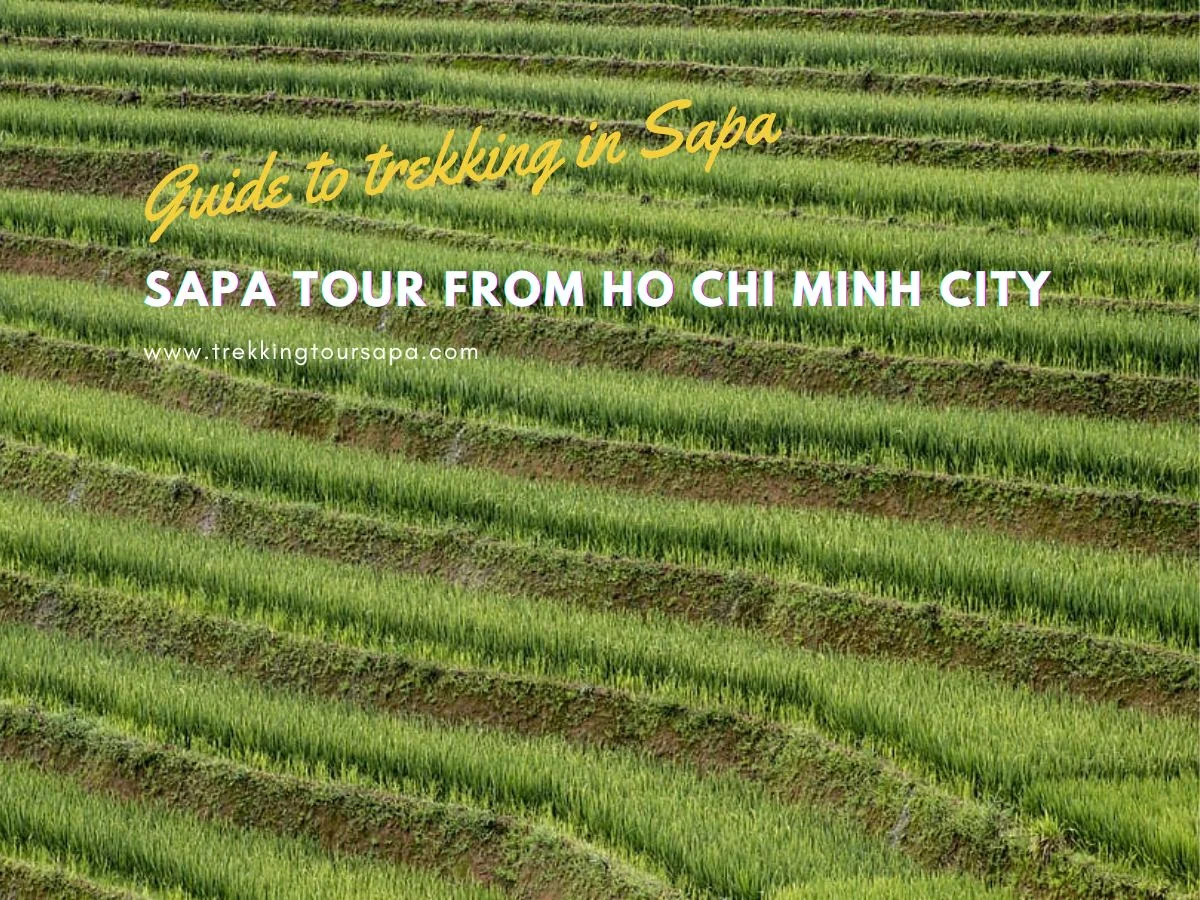Sapa Tour From Ho Chi Minh City
Are you ready for an adventure that will leave you breathless and in awe? Look no further than a Sapa tour from Ho Chi Minh City. Nestled high up in the mountains of Vietnam, Sapa offers stunning views and an immersive cultural experience that is sure to be unforgettable.
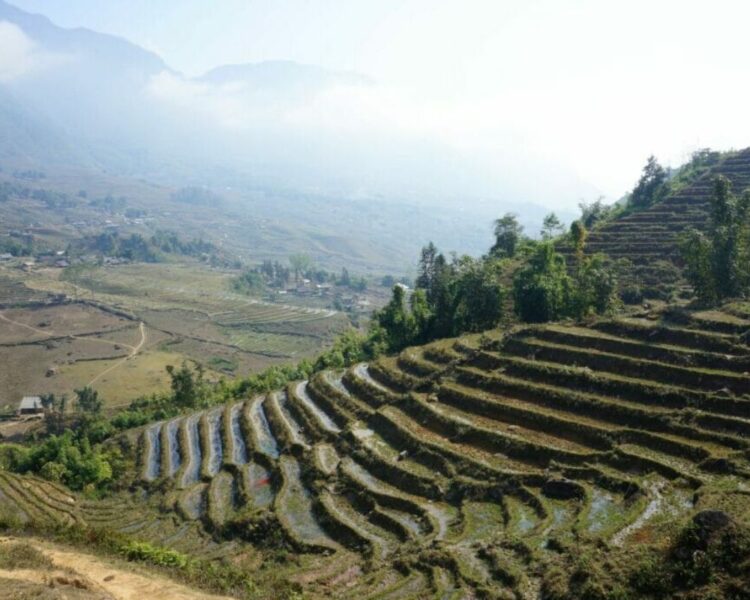
Starting your journey from bustling Ho Chi Minh City, you’ll travel by plane or train (depending on your preference) to Lao Cai before making your way up to Sapa. As you wind through the mountain roads, you’ll see breathtaking vistas of terraced rice fields and towering peaks. This is not just any ordinary tour; it’s a chance to escape the mundane and explore a world unlike anything else.
So pack your bags, strap on your hiking boots, and get ready for an adventure of a lifetime with our Sapa tour from Ho Chi Minh City.
Table of Contents
ToggleGetting To Sapa
Did you know that Sapa is home to some of the most stunning rice terraces in Southeast Asia? These terraces are considered a national treasure and attract thousands of tourists every year. If you’re planning on taking a trip to Sapa from Ho Chi Minh City, there are several things you need to consider before embarking on your adventure.
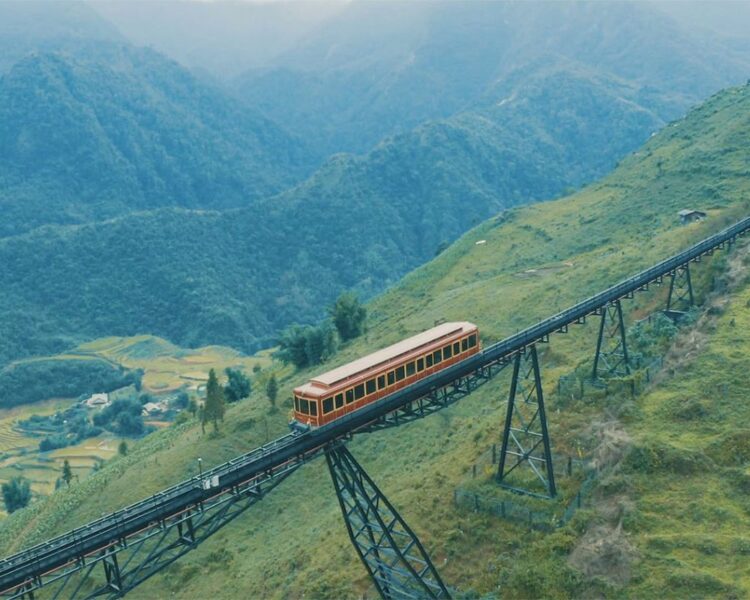
Organizing transport is one of the first things you should do when planning your trip. You can choose to take an overnight train or bus from Hanoi to Sapa, which takes around 8 hours. Alternatively, you could fly directly into Lao Cai airport and then travel by car or motorbike to Sapa. Don’t forget to pack essentials such as warm clothing, comfortable shoes for walking, insect repellent, and sunscreen.
With these preparations sorted out, it’s time for you to start exploring local villages!
Exploring Local Villages
After a refreshing night’s rest, we’ll start our day by exploring the local villages around Sapa. Get ready to immerse yourself in the customs and traditions of the hill tribes that call this region their home. Our knowledgeable guide will lead us through verdant rice paddies and lush forests as we make our way towards ancient ruins hidden away amongst the hills.
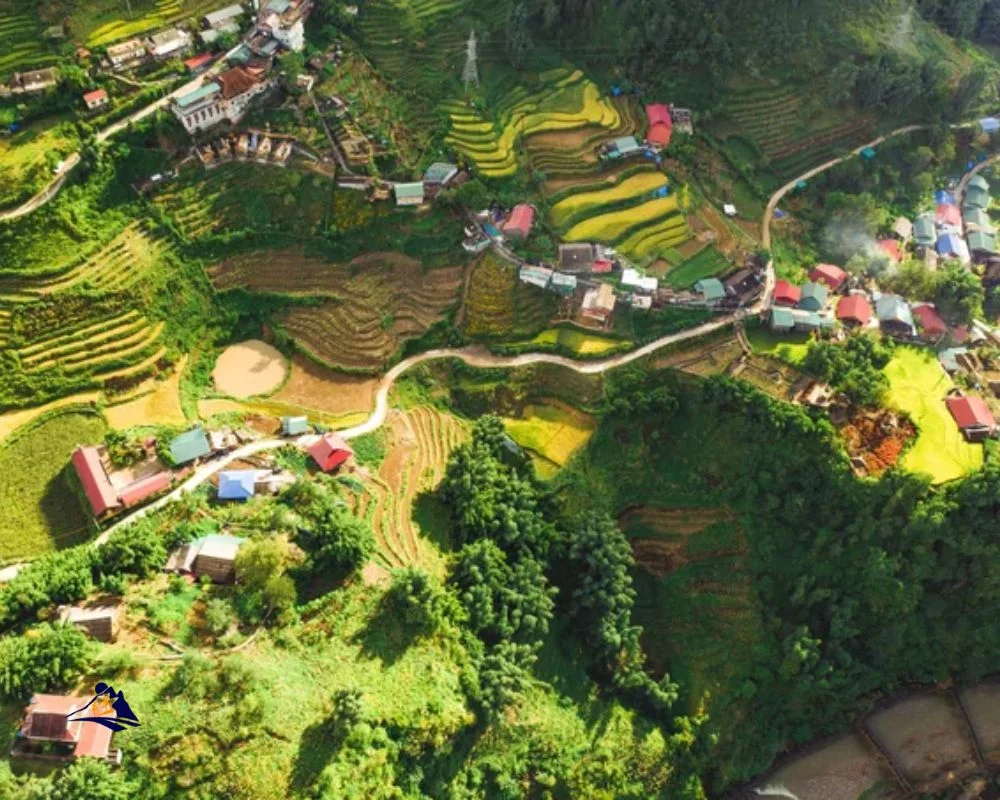
As we wander through these remote villages, you’ll have ample opportunity to interact with locals and learn about their daily lives. Experience firsthand how they farm the land and weave intricate textiles using traditional techniques passed down from generation to generation.
Before returning to town, don’t forget to visit one of the vibrant night markets where you can sample delicious street food and pick up unique souvenirs crafted by talented artisans.
Ready for more adventure? In our next section, we’ll be trekking through the mountains on an unforgettable journey that will leave you breathless both figuratively and literally!
Trekking Through The Mountains
As we continue our Sapa tour, let’s lace up our hiking boots and hit the trails for an unforgettable trek through the mountains. The lush greenery and breathtaking views of this stunning landscape will have you feeling alive and free.
Along the way, keep your eyes peeled for wildlife spotting opportunities – from colorful birds to majestic deer, there is always something amazing to discover in this natural wonderland. Our expert guides are here to take you on a journey that combines adventure with relaxation. Trekking through these rugged hills allows us to disconnect from the hustle and bustle of city life and reconnect with nature.

As we make our way along the winding paths, pause for a moment to breathe in the fresh mountain air and appreciate this truly unique experience. At every turn, be prepared to be awed by the beauty of Sapa’s rolling hills and valleys. Nestled beneath towering peaks, the splendor of untouched wilderness, a chance encounter with rare species – these are just some of the things that await us on our trek through the mountains.
So what are you waiting for? Let’s get moving! As we prepare ourselves for another exciting day exploring Sapa, it would be remiss not to mention one of its most delightful features – local cuisine. We’ll soon be indulging in some mouthwatering dishes crafted by talented chefs using locally sourced ingredients bursting with flavor.
From savory soups to succulent meats cooked over open flames, every bite tells a story about Vietnam’s rich gastronomic heritage. So why not join us as we embark on yet another culinary adventure?
Experiencing Local Cuisine
After trekking through the mountains of Sapa, it’s time to indulge in some local cuisine. Are you ready for a taste adventure? Sapa is known for its incredible street food and traditional dishes that will leave your taste buds dancing with joy.
To fully experience the local culinary scene, we recommend taking a walking tour through the streets of Sapa. Our expert guide will take you on a journey to discover hidden gems and popular spots where locals gather to eat. You’ll have the opportunity to try delicious banh mi sandwiches filled with fresh herbs, grilled meats marinated in lemongrass and spices, and savory pho soup made from scratch. Don’t forget to save room for dessert! The sweet sticky rice cakes wrapped in banana leaves are not to be missed.
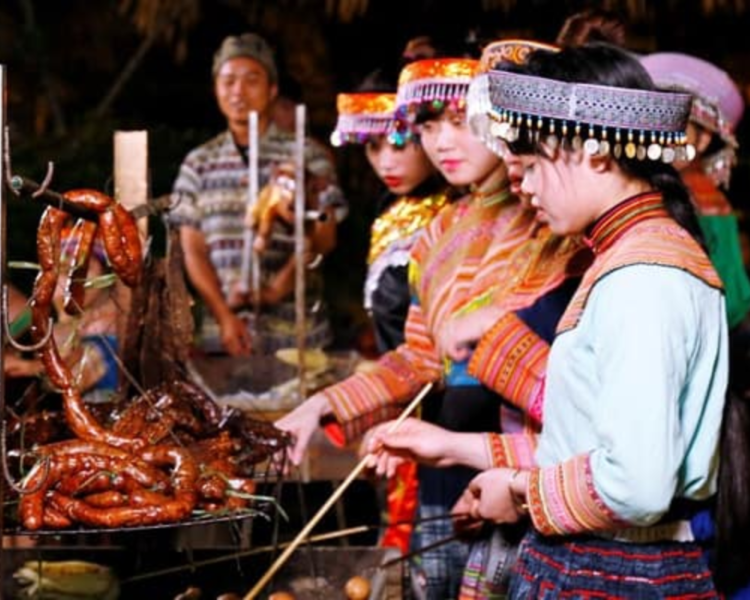
As you savor each bite, you’ll also gain insight into the culture and history behind these beloved dishes. Did you know that many of these recipes have been passed down through generations of families? This connection between food and heritage makes tasting street food all the more meaningful. So come hungry and open-minded – let’s explore together!
And while there’s still so much more to see and do in Sapa, one activity that cannot be missed is visiting minority groups who call this region home. These communities offer an authentic glimpse into daily life in Northern Vietnam, as well as unique cultural traditions that have been preserved for centuries. From learning how fabrics are woven by hand using natural dyes to experiencing traditional dance performances, visiting minority groups is an enriching experience that should not be overlooked during your stay in Sapa. Let’s continue our adventure!
Visiting Minority Groups
As we venture deeper into the mountains of Sapa, we have the opportunity to visit some of the local minority groups. These ethnic communities are an integral part of Vietnam’s cultural heritage and way of life. By supporting education initiatives in these areas, we can help preserve their traditions for generations to come.
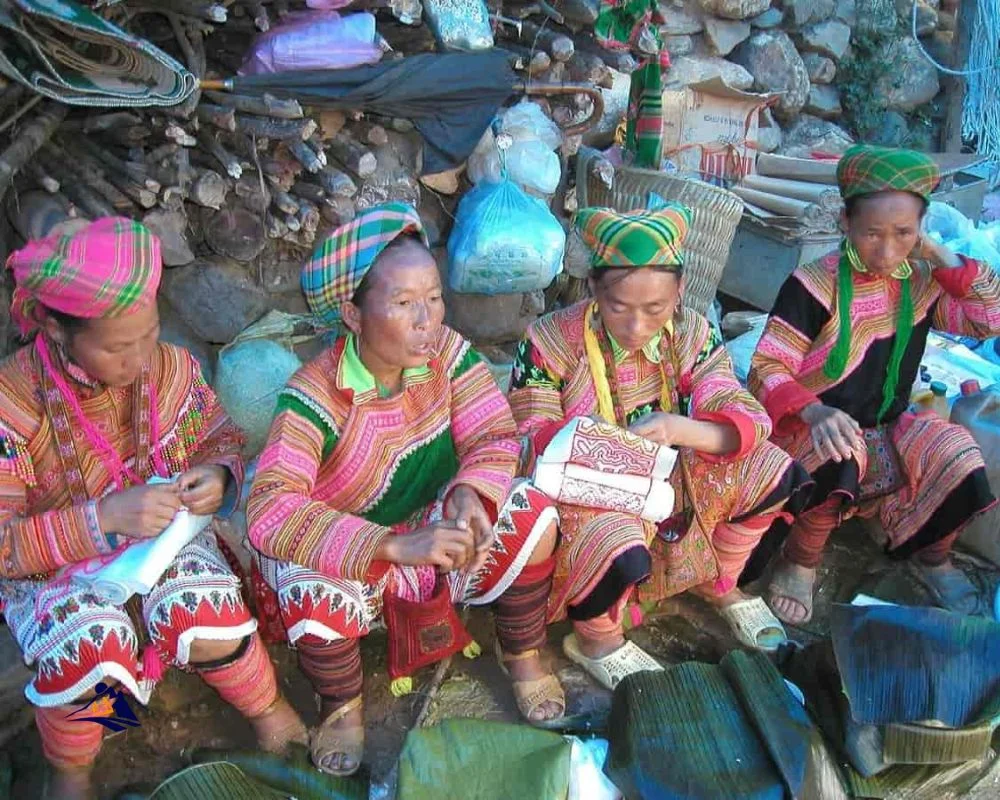
One such community is the Hmong people, famous for their intricate embroidery and stunning textiles. During our visit, we will have a chance to witness this art form firsthand and even try our hand at creating something ourselves. Additionally, we will discover customs unique to each group, giving us a better understanding of their way of life and values. To truly understand a culture, it is important not only to observe but also to participate. On our tour of Sapa, we strive to create meaningful connections with locals while respecting their traditions and ways of life.
Join us as we continue our journey by shopping for handicrafts created by these talented artisans.
Shopping For Handicrafts
After spending time with the minority groups and learning about their culture, it’s time to bring home some souvenirs. And what better way to do that than through bargain hunting for unique handicrafts?
The markets in Sapa are a treasure trove of handmade items such as embroidered clothing, woven fabrics, and wooden carvings. But before you start haggling for prices, here are some tips: always start with half of the asking price, be willing to walk away if the seller won’t budge on the price, and don’t forget to smile!
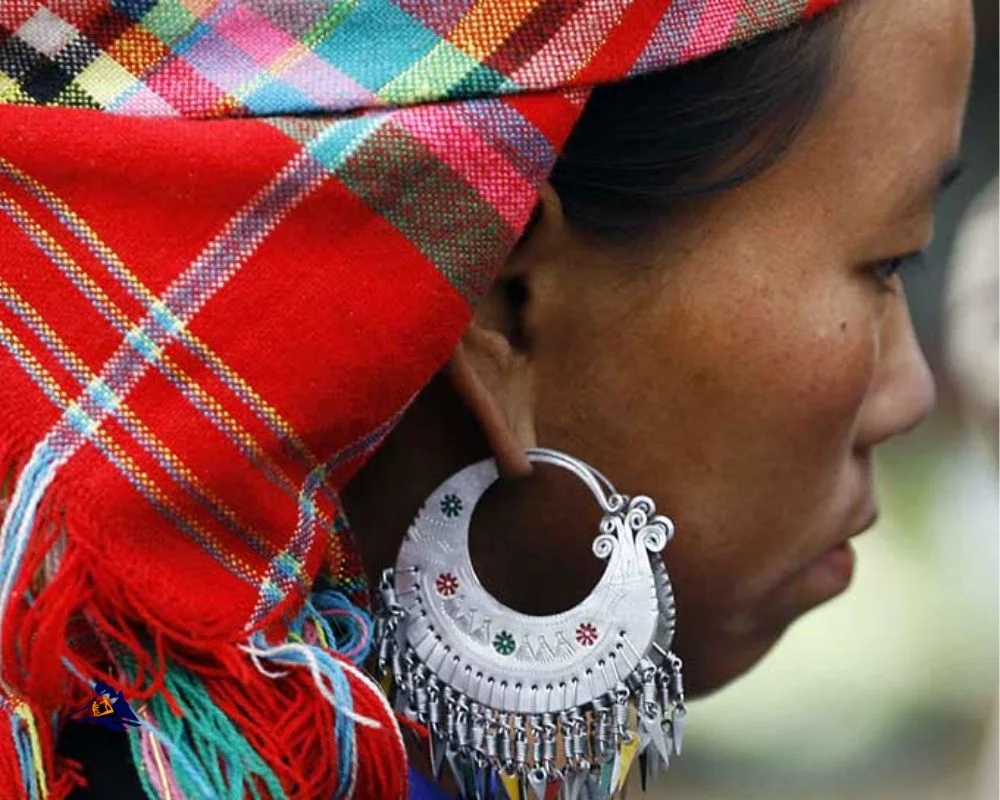
Haggling can be fun and exciting, but remember to respect the sellers and their craft. Happy shopping! As we move on to take in the natural beauty of Sapa, let us not forget that this town is surrounded by stunning mountainous landscapes. From waterfalls to rice paddies, there is no shortage of breathtaking sights to see.
So take a deep breath and immerse yourself in nature’s splendor as we explore more of what Sapa has to offer.
Taking In The Natural Beauty
As you trek through the mesmerizing landscapes of Sapa, don’t forget to take some time to soak up the stunning sunsets that light up the sky. The view is simply breathtaking as hues of orange and pink blend together while disappearing behind the majestic mountains. You’ll feel a sense of peace wash over you as if all your worries have been lifted away by this natural wonder.
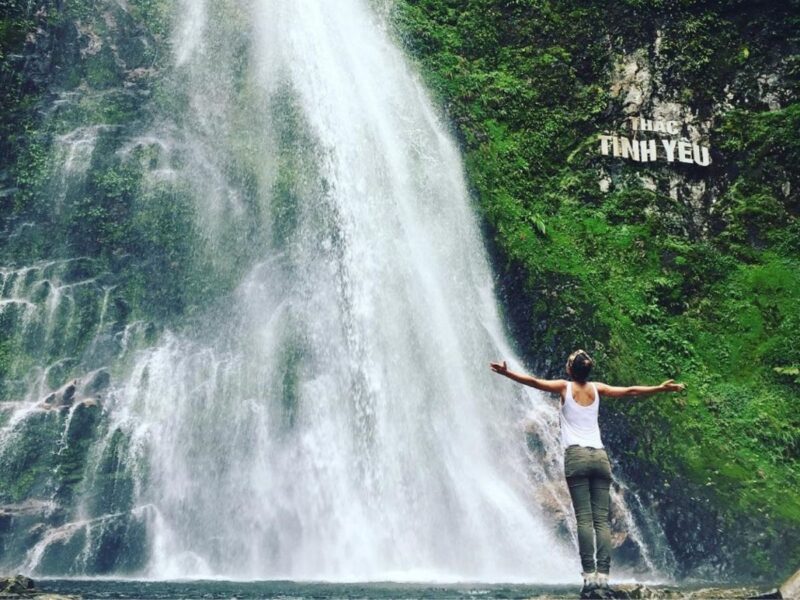
While exploring Sapa’s lush green rainforests, make sure to keep an eye out for hidden waterfalls. These cascading wonders are tucked away in remote corners yet add to the charm of this serene region. Take a dip in one of these refreshing pools or just sit back and let yourself be captivated by their beauty. There’s no better way to experience nature than by finding your secret waterfall in this captivating destination.
As you’ve immersed yourself into nature’s embrace, now it’s time to dive deeper into understanding Sapa’s culture firsthand. Participating in cultural activities will not only give you insights into local traditions but also help sustain them for future generations.
Let’s take a step towards immersing ourselves completely in Sapa’s vibrant culture!
Participating In Cultural Activities
Exploring local markets is a great way to get a real taste of the culture, as you’ll find all kinds of unique items and be able to haggle with the locals. Tasting local cuisine is also a must-try when visiting, as it’s the best way to truly experience the flavors of the area.
Tasting Local Cuisine
If you want to truly experience the culture of Sapa, tasting local cuisine is a must-do activity. The region’s food is heavily influenced by its ethnic minorities and features unique flavors that will tantalize your taste buds. One way to sample these dishes is by visiting markets where vendors sell fresh produce and cooked meals made from locally sourced ingredients. You can also explore the nightlife scene in Sapa and try street food specialties like grilled meats, fried snacks, and hot soups. From savory stews to sweet desserts, there are plenty of options for every palate.
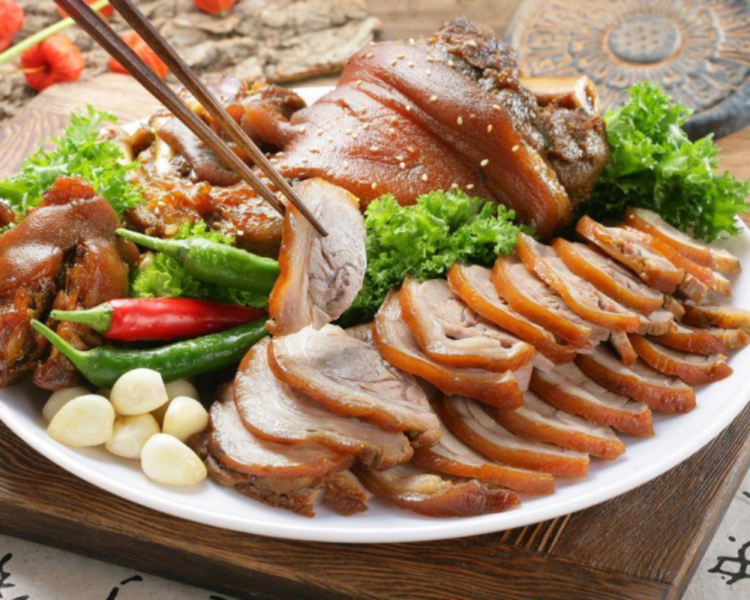
So don’t miss out on this opportunity to indulge in authentic Vietnamese dishes that will leave you craving more!
Exploring Local Markets
Now that you’ve had a taste of Sapa’s local cuisine, it’s time to dive deeper into the region’s cultural activities. One way to do this is by exploring the bustling markets where vendors sell everything from fresh produce to handmade crafts. Not only will you have the opportunity to observe traditional customs and bargaining techniques, but you’ll also get a chance to interact with locals and learn more about their daily lives. Don’t be afraid to strike up a conversation or sample some of the delicious street food on offer as you wander through the colorful stalls.
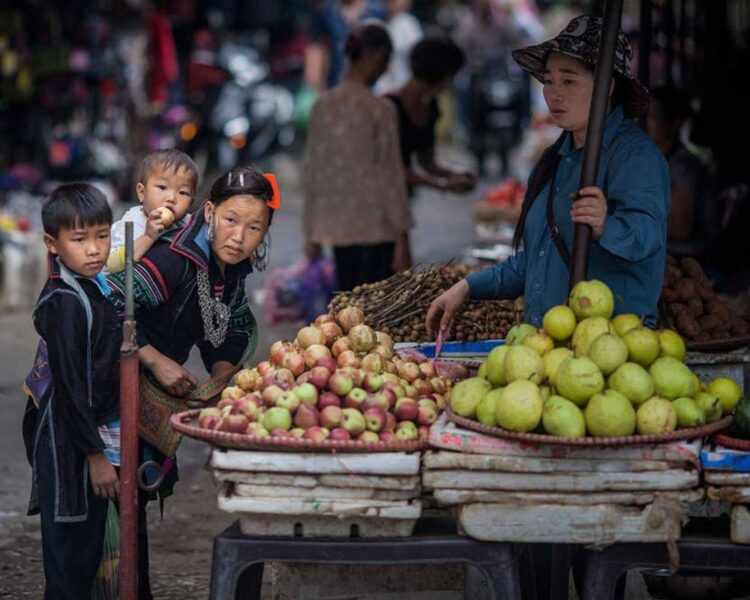
By immersing yourself in these vibrant marketplaces, you’ll gain a greater appreciation for Sapa’s unique culture and history.
Taking A Cable Car Ride
Did you know that the Fansipan Cable Car in Sapa is the longest non-stop cable car ride in the world? With a length of 6.2 kilometers, this cable car offers unparalleled views of the Hoang Lien Son mountain range and takes visitors up to the summit of Fansipan Mountain, also known as ‘the Roof of Indochina.’
But it’s not just about breaking records – taking a cable car ride is an experience like no other. As you ascend into the clouds, with nothing but blue skies and green forests stretching out beneath you, you’ll feel a sense of freedom and awe that can’t be found anywhere else.
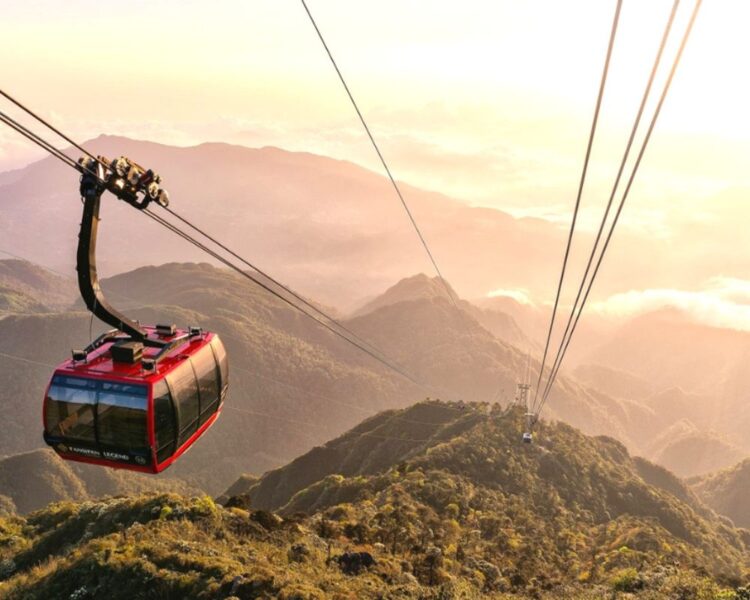
And if you time your trip right, you might even get treated to a breathtaking sunrise view from above. Of course, safety is always a concern when it comes to any kind of adventure activity. But rest assured that the Fansipan Cable Car has been designed with maximum safety measures in mind. The cabins are equipped with emergency brakes and communication systems, while regular maintenance checks ensure everything runs smoothly.
So all you need to do is sit back, relax, and enjoy the ride! Now that you’ve had a taste of what Sapa has to offer from high above, let’s talk about how to make the most of your time on solid ground.
Making The Most Of Your Time In Sapa
As you arrive in Sapa, the scenic beauty of this mountainous region will leave you awestruck. To make the most of your time here, it is important to plan your itinerary. From discovering attractions like Fansipan Mountain and Silver Waterfall to exploring ethnic villages like Cat Cat Village and Ta Phin Village, there are plenty of things that should be on your must-visit list.

To ensure a smooth trip, make sure to research ahead of time about what each attraction has to offer and how much time it might take for you to explore them fully. Don’t forget to also factor in some downtime so that you can soak in the stunning views around you.
With proper planning, you can make every moment count during your visit to Sapa and create unforgettable memories that will last a lifetime.
Sapa Tour From Ho Chi Minh City Frequently Asked Questions
What Is The Best Time Of Year To Visit Sapa?
Imagine a tapestry woven with threads of vibrant colors, intricate patterns, and delicate embroidery. This is what Sapa looks like during the best time of year to visit – from September to November.
The rice terraces are painted in hues of gold, yellow, and green creating stunning landscapes that take your breath away. But cultural etiquette should be kept in mind while exploring this beautiful region. It’s important to respect the local customs and traditions when interacting with ethnic minority groups who call Sapa their home.
As for weather impact, it’s worth noting that this period experiences clear skies, and mild temperatures ranging from 15-25°C making it perfect for hiking or trekking adventures through valleys and villages. So if you’re looking for an escape into nature while indulging in diverse cultures, then visiting Sapa in September-November would be ideal for you!
Are There Any Cultural Taboos Or Customs To Be Aware Of When Visiting Minority Groups?
When visiting the minority groups in Sapa, it’s important to be aware of their social etiquette and cultural norms. These communities have unique customs that may seem unfamiliar to outsiders, but respecting them is crucial for a meaningful and respectful experience.
For instance, it’s customary to remove your shoes before entering someone’s home, and touching someone’s head or pointing with your feet can be considered offensive. As a responsible traveler, taking the time to learn about these taboos not only shows respect for the locals but also enriches your understanding of their traditions.
So don’t hesitate to immerse yourself in this fascinating culture while keeping in mind the importance of cultural sensitivity!
Can You Recommend Any Specific Restaurants Or Street Food Vendors In Sapa?
‘Variety is the spice of life,’ and nowhere else does this ring more true than in Sapa, Vietnam. As a traveler seeking adventure in local cuisine, it’s important to be aware of eating etiquette when indulging in the area’s many delicious delicacies. From communal dining with your hosts at homestays to street food vendors offering their unique take on classic Vietnamese dishes, there are endless options for satisfying your hunger while immersing yourself in the culture.
Some highly recommended restaurants include Little View Restaurant and Good Morning View Café & Homestay, both serving up fresh and flavorful meals made from locally sourced ingredients. For those looking for a truly authentic experience, try some grilled meats or noodle soups from one of the many street food stalls lining the streets of Sapa.
Don’t be afraid to follow your taste buds and explore all that Sapa has to offer.
How Physically Challenging Are The Trekking Routes In Sapa?
When planning a trip to Sapa, it’s essential to consider the physical demands of trekking routes. While some trails are relatively easy and suitable for beginners, others can be more challenging and require a certain level of fitness.
Risk factors such as steep inclines, slippery terrain, and unpredictable weather conditions should also be taken into account. Therefore, it’s highly recommended to hire local guides who are familiar with the area and can provide valuable insights on safety precautions and navigation.
By doing so, you’ll not only have peace of mind but also get to experience the stunning natural beauty that Sapa has to offer without any worries or stress. So if you’re looking for an adventure in Vietnam that combines nature, culture, and exploration – Sapa is worth considering!
Are There Any Specific Souvenirs Or Handicrafts Unique To Sapa That Visitors Should Look Out For?
When in Sapa, it’s impossible to resist the temptation of shopping for souvenirs and handicrafts unique to this region.
However, be wary of tourist traps that sell mass-produced items claiming to be authentic. To avoid these pitfalls, here are some shopping tips:
– Head to local markets such as Bac Ha Market or Can Cau Market where you can find hand-embroidered textiles made by ethnic minority women;
– Visit ethnic villages like Cat Cat Village to purchase handmade silver jewelry or batik prints on hemp fabric;
– Don’t forget to try a cup of locally-grown coffee before leaving town.
Remember, supporting local artisans is not only an opportunity to take home something truly special but also helps sustain traditional crafts and cultures.
Conclusion
So there you have it, folks! A comprehensive guide to exploring Sapa from Ho Chi Minh City. As someone who has experienced the magic of this beautiful destination firsthand, I can assure you that you won’t be disappointed.
When planning your trip, keep in mind that the best time to visit Sapa is between March and May or September and November when the weather is mild and dry. However, if you’re looking for a more adventurous experience, consider visiting during the rainy season (June-August) when the rice terraces are at their most vibrant. As with any cultural immersion experience, it’s important to be respectful of local customs and traditions. When visiting minority groups in Sapa, make sure to dress appropriately and ask permission before taking photos or entering homes.
Finally, don’t forget to indulge in some of Sapa’s incredible cuisine – from street food vendors selling piping hot pho to high-end restaurants offering traditional Hmong dishes, there’s something for every palate. To conclude, as poet Robert Frost once said: ‘Two roads diverged in a wood…I took the one less traveled by.
So why not take a chance on an off-the-beaten-path adventure and explore all that Sapa has to offer? You never know what hidden treasures you may discover along the way.
